Dagstuhl-Seminar 18041
Foundations of Data Visualization
( 21. Jan – 26. Jan, 2018 )
Permalink
Organisatoren
- Helwig Hauser (University of Bergen, NO)
- Penny Rheingans (University of Maryland, Baltimore County, US)
- Gerik Scheuermann (Universität Leipzig, DE)
Kontakt
- Michael Gerke (für wissenschaftliche Fragen)
- Susanne Bach-Bernhard (für administrative Fragen)
Impacts
- A Critical Analysis of the Evaluation Practice in Medical Visualization - Preim, Bernhard; Ropinski, Timo; Isenberg, Petra - HAL Inria, 2018. - 13 pp..
- Details-First, Show Context, Overview Last : Supporting Exploration of Viscous Fingers in Large-Scale Ensemble Simulations : article : Dagstuhl Seminar 18041 and 18161 - Luciani, Timothy; Burks, Andrew; Sugiyama, Cassiano; Komperdam Jonathan; Marai, Georgeta Elisabeta - Los Alamitos : IEEE, 2019. - pp. 1225-1235 - (IEEE transactions on visualization and computer graphics ; 25. 2019, 1).
- Foundations of Data Visualization - Chen, Min; Hauser, Helwig; Rheingans, Penny; Scheuermann, Gerik - Berlin : Springer, 2020. - XVII, 389 S.. ISBN: 978-3-030-34443-6 / 3-030-34443-6.
- OpenSpace : A System for Astrographics : article - Bock, Alexander; Axelsson, Emil; Costa, Jonathas; Payne, Gene; Acinapura, Micah; Trakinski, Vivian; Emmart, Carter; Ynnerman, Anders; Hansen, Charles D.; Silva, Claudio - Los Alamitos : IEEE, 2020. - pp. 633-642 - (IEEE transactions on visualization and computer graphics ; 26. 2020, 1).
Data visualization is the transformation of observed or simulated data into usually interactive images. It is an indispensable part of knowledge discovery processes in many fields of contemporary endeavor. The strength of data visualization is the effective and efficient utilization of the broad bandwidth of the human sensory system. This Dagstuhl Seminar focuses on the foundations of data visualization, contributing to the fundamental understanding of generic methodologies in data visualization, including theories, models, workflows, evaluation metrics, perceptual and usability studies. Experts from all areas of data visualization, including scientific visualization, information visualization, and visual analytics, engage in an in-depth discussion, based on their broad expertise.
Rapid advances in data visualization have resulted in many useful visual designs, algorithms, software tools, and development kits. There is also a substantial body of work on mathematical approaches in data visualizations such as topological methods, feature extraction, and information theoretical results. A unified description of theoretical and perceptual aspects of visualization would allow visualization practitioners to derive even better solutions using a sound theoretical basis. There are promising ideas but they need further discussion. Currently, visualization uses user studies to decide if a visual design is more effective, but a comprehensive theory would allow visualization researchers to answer why one visual design is more effective than another and how the visual design can be optimized. Furthermore, there is usually an understanding of the role of a specific visualization in a specific analytic workflow, but a formalization of the general role of visualization in the analytic workflow is needed. This may also allow for more quantitative measures of visualization quality. In addition, the community needs a deeper, general understanding of the most informative way to conduct perceptual and usability studies involving domain experts. The following four foundation aspects will be of special interest:
- Theory of the visualization process. A theory of the entire visualization process needs to cover all parts of the visualization pipeline and should be applicable to a large variety of application domains. Such a theory would be the ultimate foundation, and there are a few attempts already that should be discussed. Such a theory should enable to find optimal visualizations and to quantify the value of visualizations. In addition, such a theory may cover the challenge of uncertainty, the processing including visual mapping and potential misinterpretation by humans.
- Foundations of evaluation. Evaluation allows designers to select visualization approaches among different options for a specific problem. One method is a user study, usually with a larger number of subjects. If only a small set of experts is available, who understand the questions behind the data, we need new study design guidelines. In addition, evaluation needs to look at limits of the human visual system. In advanced analytic applications, it is also very important to study the relation between user interest and visualization.
- Application viewpoint. Almost all visualizations address questions and needs from researchers, engineers, analysts, decision makers, or the general public. Therefore, visualization nearly always involves people outside the visualization community. The seminar will discuss methodologies for defining domain requirements and realistic roles of application researchers in evaluation.
- Mathematical foundations of visual data analysis. There is a rich tradition of mathematical and computational methods used in visualization, such as topological approaches, feature extraction, numerical sampling and reconstruction methods, numerical integration, differential operators, filtering, dimension reduction, and applications of information theory, partly incorporating uncertainty. While all these methods have a solid mathematical foundation, a careful look at the relation between theories and their role in visual data analysis is needed.
 Helwig Hauser, Penny Rheingans, and Gerik Scheuermann
Helwig Hauser, Penny Rheingans, and Gerik Scheuermann
Data Visualization is the transformation of data, derived from observation or simulation, and models into interactive images. It has become an indispensable part of the knowledge discovery process in many fields of contemporary endeavor. Since its inception about three decades ago, the techniques of data visualization have aided scientists, engineers, medical practitioners, analysts, and others in the study of a wide variety of data, including numerical simulation based on high-performance computing, measured data from modern scanners (CT, MR, seismic imaging, satellite imaging), and survey and sampled data, and metadata about data confidence or provenance. One of the powerful strengths of data visualization is the effective and efficient utilization of the broad bandwidth of the human sensory system in interpreting and steering complex processes involving spatiotemporal data across a diverse set of application disciplines. Since vision dominates our sensory input, strong efforts have been made to bring the mathematical abstraction and modeling to our eyes through the mediation of computer graphics. The interplay between these multidisciplinary foundations of visualization and currently emerging, new research challenges in data visualization constitute the basis of this seminar.
The rapid advances in data visualization have resulted in a large collection of visual designs, algorithms, software tools, and development kits. There is also a substantial body of work on mathematical approaches in visualizations such as topological methods, feature extraction approaches, and information theoretical considerations. However, a unified description of theoretical and perceptual aspects of visualization would allow visualization practitioners to derive even better solutions using a sound theoretical basis. There are promising ideas but they need further discussion. Currently, we employ user studies to decide if a visual design is more effective, but a comprehensive theory would allow visualization researchers to answer why one visual design is more effective than another and how the visual design can be optimized. Furthermore, we usually have an understanding of the role of a specific visualization in a specific analytic workflow, but we would like to formalize the general role of visualization in the analytic workflow. This would also allow for more quantitative measures of visualization quality. In addition, the community needs a deeper, general understanding of the most informative way to conduct perceptual and usability studies involving domain experts.
For this seminar, we chose to take a focused consideration of the foundations of visualization in order to establish an integrated discussion on the fundamental understanding and generic methodologies of data visualization, including theories, models and workflows of data visualization, evaluation metrics, and perceptual and usability studies. We included experts from all areas of visualization such as scientific visualization, information visualization, and visual analytics to allow for an in-depth discussion of our shared research foundations based on a broad expertise.
With the experience of delivering technical advances over the past three decades, it is timely for the visualization community to address these fundamental questions with a concerted effort. Such an effort will be critical to the long-term development of the subject, especially in building a theoretical foundation for the subject. The community needs to develop suitable models for the whole visualization process from cleaning and filtering the data, analysis processing, mapping to graphical scenes, to the interpretation by the human visual system. While there are some methods of evaluation based on user studies and findings in applications, a complete theoretical foundation for evaluations is missing. Modern visualization includes advanced numerical and combinatorial data processing, so the correctness of this processing including a critical look at its assumptions with respect to the application at hand is needed. Only then, visualization can establish strong correlations between visualization algorithms and questions in the application domains. In addition, uncertainty has received attention from the visualization community in recent years, but a full analysis of uncertainty at all stages of the established visualization pipeline is still not available. Theoretical foundations of uncertainty in visualization need to look at uncertainty in the data, errors due to numerical processing, errors due to visual depiction and, finally, uncertainty in the results based on human misinterpretation of interactive visual depictions.
This workshop addressed five important topics:
Theory of overall visualization process. A theory of the whole visualization process needs to cover all parts of the visualization pipeline and should be applicable to broad classes of application domains. Of course, it is the ultimate foundation, but there are a few formulation attempts and the seminar discussed them. Such a theory should allow to find optimal visualizations and to quantify the value of visualizations. In addition, it is strongly believed by most experts that such a theory needs to cover the challenge of uncertainty in the data, the processing including visual mapping and potential misinterpretation by human observers.
Foundations of evaluation. Evaluation allows designers and analysts to select visualization approaches from among different options for a specific problem. One evaluation method is a user study, usually with a larger group of subjects. Here, it is often a challenge that there is only a very small set of experts available that understand the scientific questions behind the data. Guidelines for user study design in these situations are necessary. In addition, evaluation needs to look at limits of the human visual system. In advanced analytic applications, it is also very important to study the relation between user interest and visualization. There are many open questions in this area that will be discussed in the seminar.
Collaboration with domain experts. Many visualizations address questions and needs from expert researchers, engineers, analysts, or decision makers. Therefore, visualization nearly always involves people outside the visualization community. The seminar included some representatives from large applied research centers so that the discussion about relations between visual data analysis and application semantics was not carried out without domain experts. These participants also commented on methodologies for defining domain requirements and realistic roles of application researchers in evaluation.
Visualization for broad audiences. Visualizations developed for broad audiences involve context and constraints different from those developed for expert domain collaborators. Such visualizations include those for personal information, school use, science centers and other public settings, and communication with a broad general public. Issues with developing visualizations for broad audiences include a higher need for intuitive metaphors and conventions, a larger imperative for drawing participants into interaction, and more requirements for robust interfaces and systems.
Mathematical foundations of visual data analysis. There is a rich tradition of mathematical/computational methods used in visualization, such as topological approaches, mathematical descriptions of feature extraction, numerical sampling and reconstruction methods, integration, differential operators, filtering, dimension reduction, and applications of information theory. In addition, we have seen promising attempts to incorporate uncertainty in these mathematical approaches. While all these methods have a solid mathematical foundation, a careful look at the relation between theories in applications and these mathematical approaches in visual data analysis was taken in this seminar.
The format of the seminar incorporated several elements: overview talks on each topic, clusters of short talks on a single topic followed by a joint panel discussion, and breakout groups on each of the five topics. Unlike the typical arrangement, all presentations in each session were given in sequence without a short Q&A session at the end of each talk. Instead, all speakers of a session were invited to sit on the stage after the presentations, and answer questions in a manner similar to panel discussions. This format successfully brought senior and junior researchers onto the same platform, and enabled researchers to seek a generic and deep understanding through their questions and answers. It also stimulated very long, intense, and fruitful discussions that were embraced by all participants. The breakout groups focused on the general themes and are reported in a later section.
 Penny Rheingans
Penny Rheingans
- James Ahrens (Los Alamos National Lab., US) [dblp]
- Johanna Beyer (Harvard University - Cambridge, US) [dblp]
- Michael Böttinger (DKRZ Hamburg, DE) [dblp]
- Stefan Bruckner (University of Bergen, NO) [dblp]
- Roxana Bujack (Los Alamos National Laboratory, US) [dblp]
- Hamish Carr (University of Leeds, GB) [dblp]
- Min Chen (University of Oxford, GB) [dblp]
- Leila De Floriani (University of Maryland - College Park, US) [dblp]
- Christoph Garth (TU Kaiserslautern, DE) [dblp]
- Eduard Gröller (TU Wien, AT) [dblp]
- Hans Hagen (TU Kaiserslautern, DE) [dblp]
- Charles D. Hansen (University of Utah - Salt Lake City, US) [dblp]
- Helwig Hauser (University of Bergen, NO) [dblp]
- Hans-Christian Hege (Zuse Institute Berlin, DE) [dblp]
- Nathalie Henry Riche (Microsoft Research - Redmond, US) [dblp]
- Mario Hlawitschka (Hochschule Leipzig, DE) [dblp]
- Ingrid Hotz (Linköping University, SE) [dblp]
- Christopher R. Johnson (University of Utah - Salt Lake City, US) [dblp]
- Alark Joshi (University of San Francisco, US) [dblp]
- Gordon Kindlmann (University of Chicago, US) [dblp]
- Helen-Nicole Kostis (USRA/GESTAR SVS NASA/GSFC, US) [dblp]
- Barbora Kozlíková (Masaryk University - Brno, CZ) [dblp]
- David H. Laidlaw (Brown University - Providence, US) [dblp]
- Heike Leitte (TU Kaiserslautern, DE) [dblp]
- Ross Maciejewski (Arizona State University - Tempe, US) [dblp]
- Georgeta Elisabeta Marai (University of Illinois - Chicago, US) [dblp]
- Kresimir Matkovic (VRVis - Wien, AT) [dblp]
- Laura A. McNamara (Sandia National Labs - Albuquerque, US) [dblp]
- Silvia Miksch (TU Wien, AT) [dblp]
- Torsten Möller (Universität Wien, AT) [dblp]
- Daniela Oelke (Siemens AG - München, DE) [dblp]
- Kristi Potter (NREL - Golden, US) [dblp]
- Bernhard Preim (Universität Magdeburg, DE) [dblp]
- Penny Rheingans (University of Maryland, Baltimore County, US) [dblp]
- Gerik Scheuermann (Universität Leipzig, DE) [dblp]
- Marc Streit (Johannes Kepler Universität Linz, AT) [dblp]
- Holger Theisel (Universität Magdeburg, DE) [dblp]
- Jarke J. van Wijk (TU Eindhoven, NL) [dblp]
- Amitabh Varshney (University of Maryland - College Park, US) [dblp]
- Maria Velez-Rojas (CA Technologies - Santa Clara, US) [dblp]
- Anna Vilanova (TU Delft, NL) [dblp]
- Ivan Viola (TU Wien, AT) [dblp]
- Daniel Weiskopf (Universität Stuttgart, DE) [dblp]
- Ross Whitaker (University of Utah - Salt Lake City, US) [dblp]
- Thomas Wischgoll (Wright State University - Dayton, US) [dblp]
- Anders Ynnerman (Linköping University, SE) [dblp]
- Caroline Ziemkiewicz (Forrester Research Inc., US) [dblp]
Verwandte Seminare
- Dagstuhl-Seminar 9135: Scientific Visualization (1991-08-26 - 1991-08-30) (Details)
- Dagstuhl-Seminar 9421: Scientific Visualization (1994-05-23 - 1994-05-27) (Details)
- Dagstuhl-Seminar 9724: Scientific Visualization (1997-06-09 - 1997-06-13) (Details)
- Dagstuhl-Seminar 00211: Scientific Visualization (2000-05-21 - 2000-05-26) (Details)
- Dagstuhl-Seminar 03231: Scientific Visualization: Extracting Information and Knowledge from Scientific Data Sets (2003-06-01 - 2003-06-06) (Details)
- Dagstuhl-Seminar 05231: Scientific Visualization: Challenges for the Future (2005-06-05 - 2005-06-10) (Details)
- Dagstuhl-Seminar 07291: Scientific Visualization (2007-07-15 - 2007-07-20) (Details)
- Dagstuhl-Seminar 09251: Scientific Visualization (2009-06-14 - 2009-06-19) (Details)
- Dagstuhl-Seminar 11231: Scientific Visualization (2011-06-05 - 2011-06-10) (Details)
- Dagstuhl-Seminar 14231: Scientific Visualization (2014-06-01 - 2014-06-06) (Details)
Klassifikation
- computer graphics / computer vision
- society / human-computer interaction
Schlagworte
- Data Visualization
- Scientific Visualization
- Information Visualization
- Visual Analytics

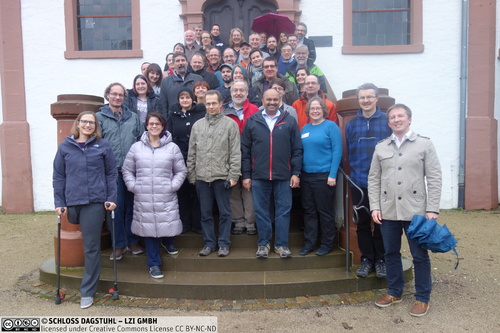
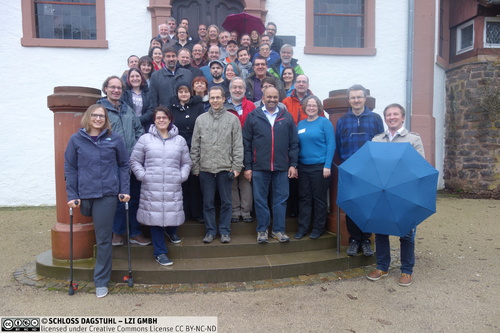
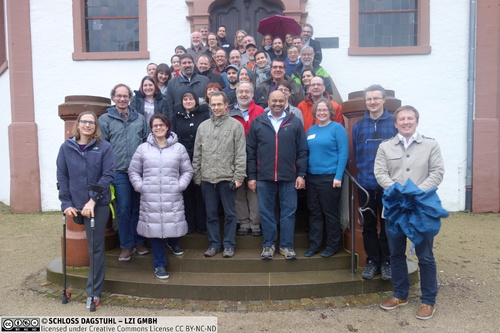
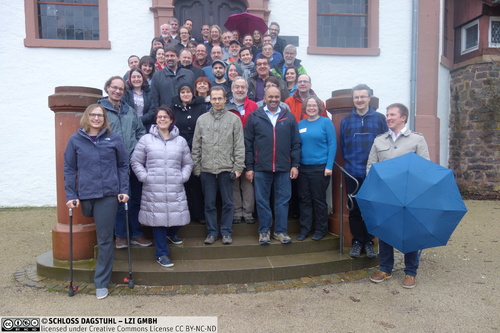
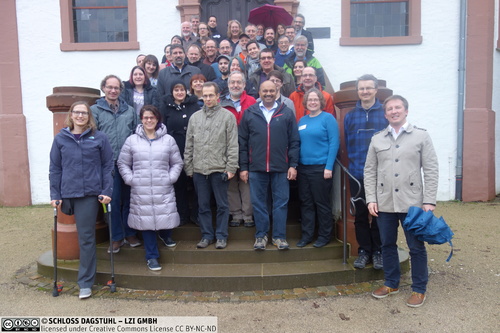
 Creative Commons BY 3.0 DE
Creative Commons BY 3.0 DE
